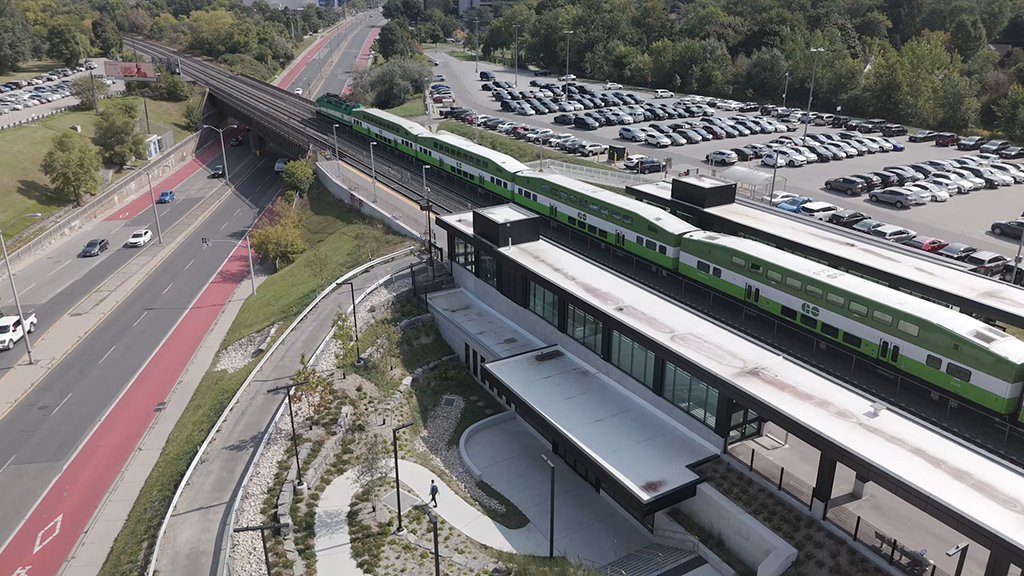The unionized construction movement in Ontario is entering a critical period, delegates attending the recent Ontario Building Trades convention in Windsor were told during multiple presentations, and it’s imperative stakeholders learn from past mistakes and make use of new tools.
Ontario Building Trades business secretary Marc Arsenault praised the efforts of the Ontario Construction Secretariat (OCS) to help the 25 construction trades in the province prepare for the next round of ICI contract bargaining in early 2025.
The OCS has developed a learning series called Fundamentals of Construction Labour Relations Courses that has led to significant “knowledge transfer,” Arsenault said, and he also urged negotiators to review the chaotic results from the last bargaining season in 2022.
During that cycle there were five ICI strikes and nine times the rank and file voted to reject proposed settlements.
Those three-year contracts expire next April 30.
Anomalies in 2022
“We had some anomalies, and we asked the Ontario Construction Secretariat to do some research,” said Arsenault. “We got back the data, and now it’s our job to do something with that.
“It’s not easy to chew on some of the things that are in there, but essentially, through incremental steps, we need to be able to address certain things before they start to fester and grow legs, and it becomes very difficult to dial them back.”
OCS director of research Katherine Jacobs addressed the delegates Oct. 17. In addition to the 2022 ICI Sector Post-Bargaining Survey, other resources the OCS has marshalled include ICI wage analysis, access to collective agreements going back 20 years and an ICI settlement tracker. Fact sheets on current economic and market trends are updated on a monthly basis.
“You need inflation numbers, you need economic growth numbers, building permit data, it’s all available,” said Jacobs.
Another speaker, Tony Fanelli, executive director of the Construction Labour Relations Association of Ontario (CLRAO), representing employers, identified competition from the non-union sector and CLAC as one looming threat as Ontario’s ICI partners prepare to enter into the next bargaining season. The CLRAO represents contractors from five civil sectors in Ontario as well as three other trades — carpenters, labourers, operating engineers, cement masons, bricklayers, rodworkers, teamsters and plasterers.

Fanelli suggested there is a mood of uncertainty currently and said he is receiving calls from owners and buyers of services wondering what the atmosphere will be like during negotiations. He issued a warning for the negotiators to avoid missteps.
“It’s important for us to get our agreements settled. Having come out of collective bargaining in the last round, and yes, coming out of Covid, it was a very difficult time, no question about it,” said Fanelli. “We need to work together to make sure that we get our needs, and we need to make sure that there’s the right number in the settlements.
“But we’ve got major work coming ahead of us…We’ve got lots of opportunity ahead.”
Jacobs’s presentation included an economic forecast offering a preview of 2025 and beyond. Economic growth was higher than expected in 2023, but still less than half compared to 2022, she said. The current year looks to be even weaker, with the pace picking up in 2025. Real GDP is forecast to see 1.0 per cent growth for 2024 and 1.8 per cent for 2025.
Inflation was 1.9 per cent for September 2024, a steep decline from the 6.9 per cent high water mark in August 2022.
In 2023, average annual construction employment peaked at an “astounding 596,000 workers, the highest level ever,” Jacobs noted. In 2024 employment is moderating mildly and will not approach that 2023 peak.
Construction employment in Ontario was 569,000 for September 2024, down from the year’s high of 581,000 in August. Construction unemployment was 4.9 per cent in August, up from 4.2 per cent in July.
Other ICI highlights:
ICI construction has faltered in 2024 but total ICI building investment is expected to increase by 17 per cent between 2024 and 2028, driven by investment in institutional and commercial.
Engineering construction investment will hover around $29 billion in the near term before bumping up to $31 billion in 2027.
Ontario continues to have a significant pipeline of major projects that will continue to drive non-residential investment through 2028. BuildForce Canada’s forecast report from last February listed categories of major projects driving construction investment in Ontario during that period, as follows — transit, $64.1 billion; utilities (power and water/wastewater), $37.4 billion; health care, $29.8 billion; industrial, $28.6 billion; government buildings, $13.6 billion; mining, $12.7 billion; roads/bridges, $9.8 billion; distribution centres/other, $2.6 billion.
The total was $203.8 billion, of which slightly more than half, $105 billion, was in the GTA.
Follow the author on X/Twitter @DonWall_DCN.







Recent Comments
comments for this post are closed